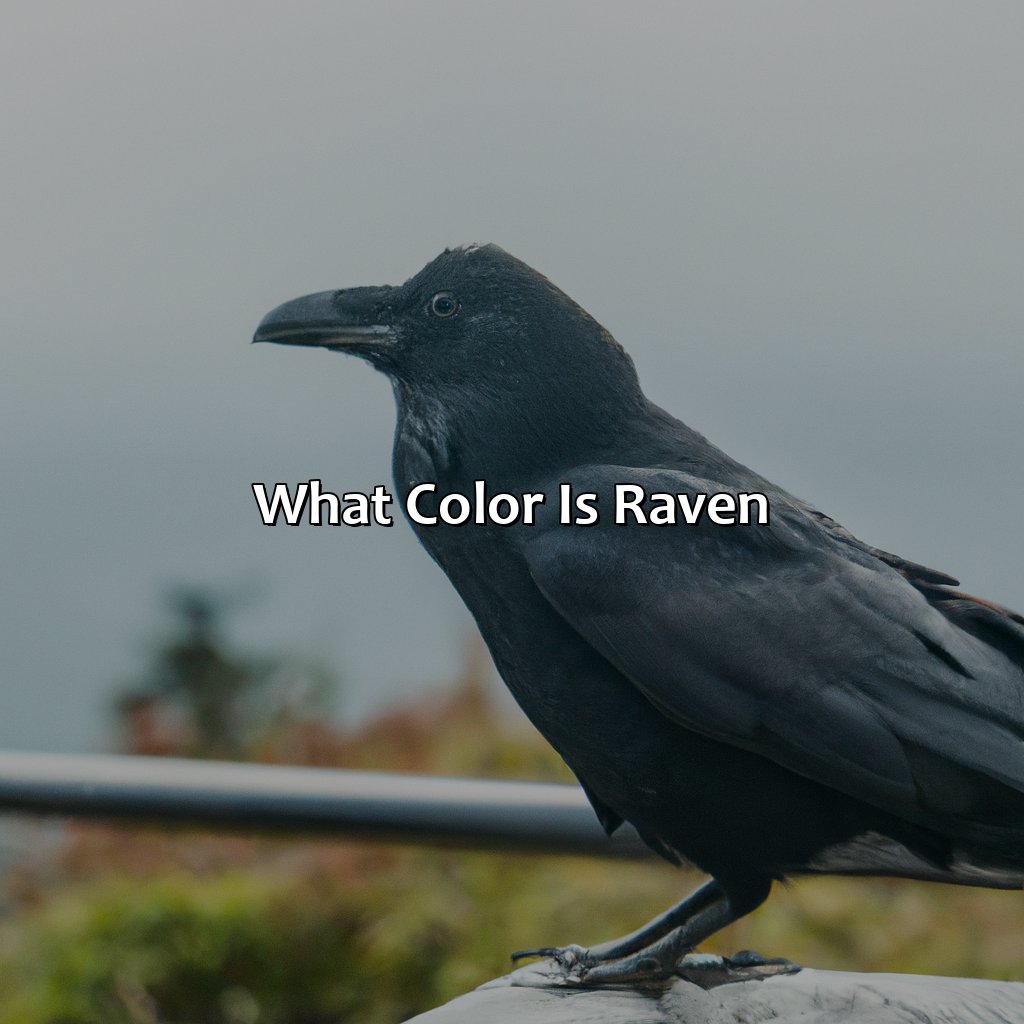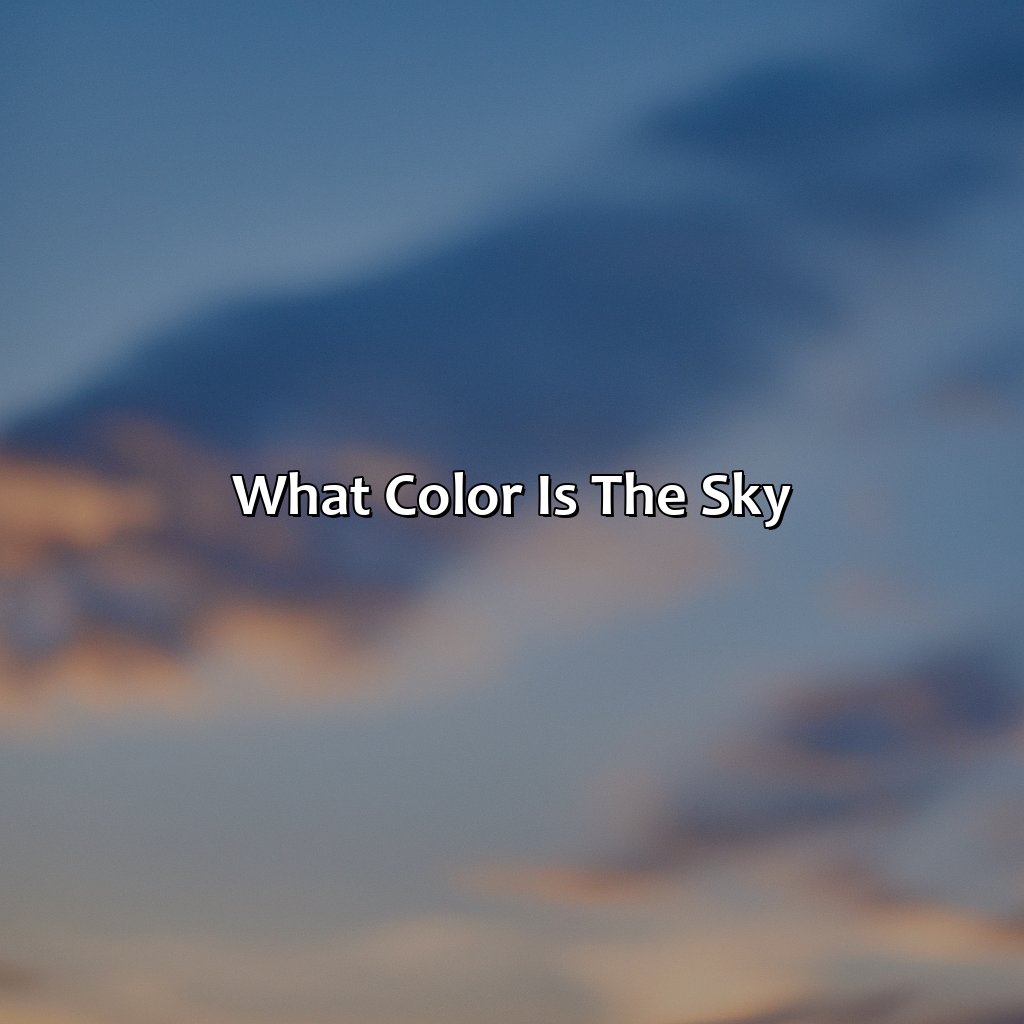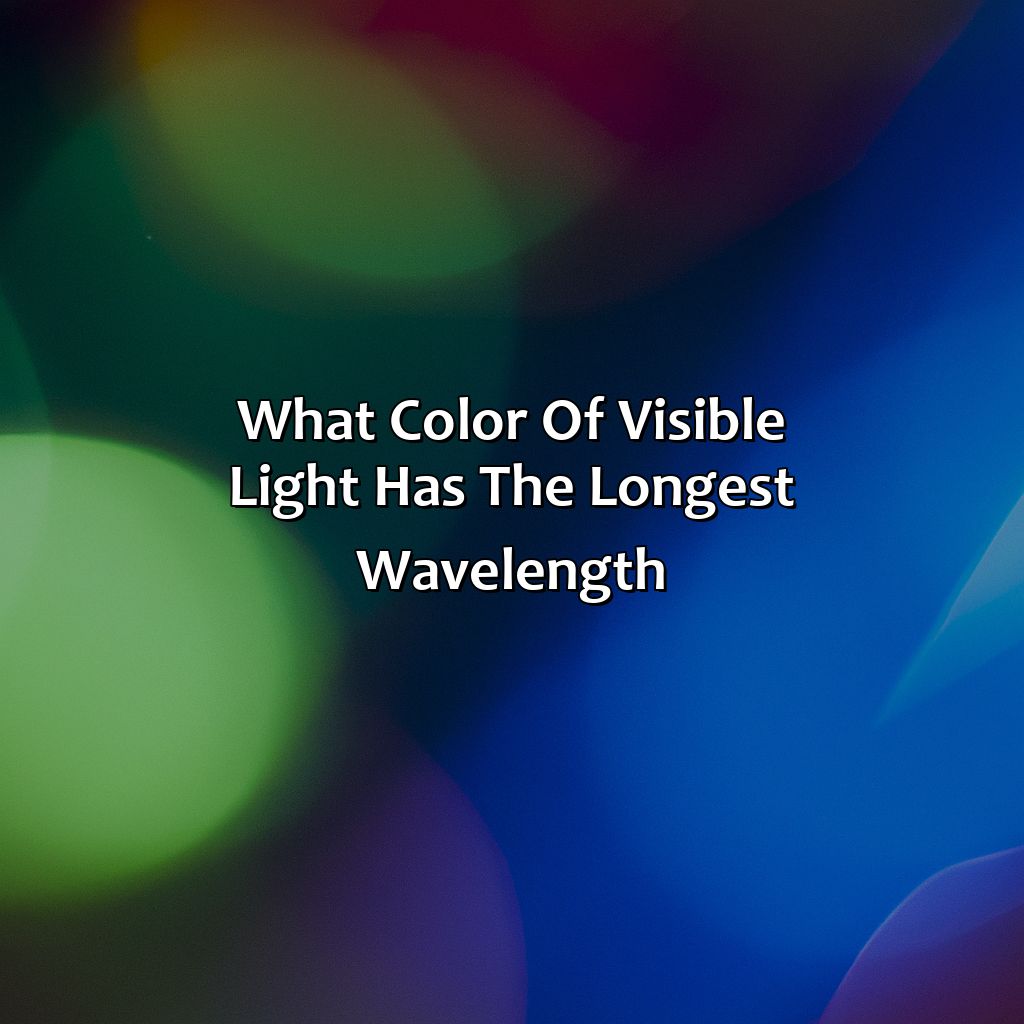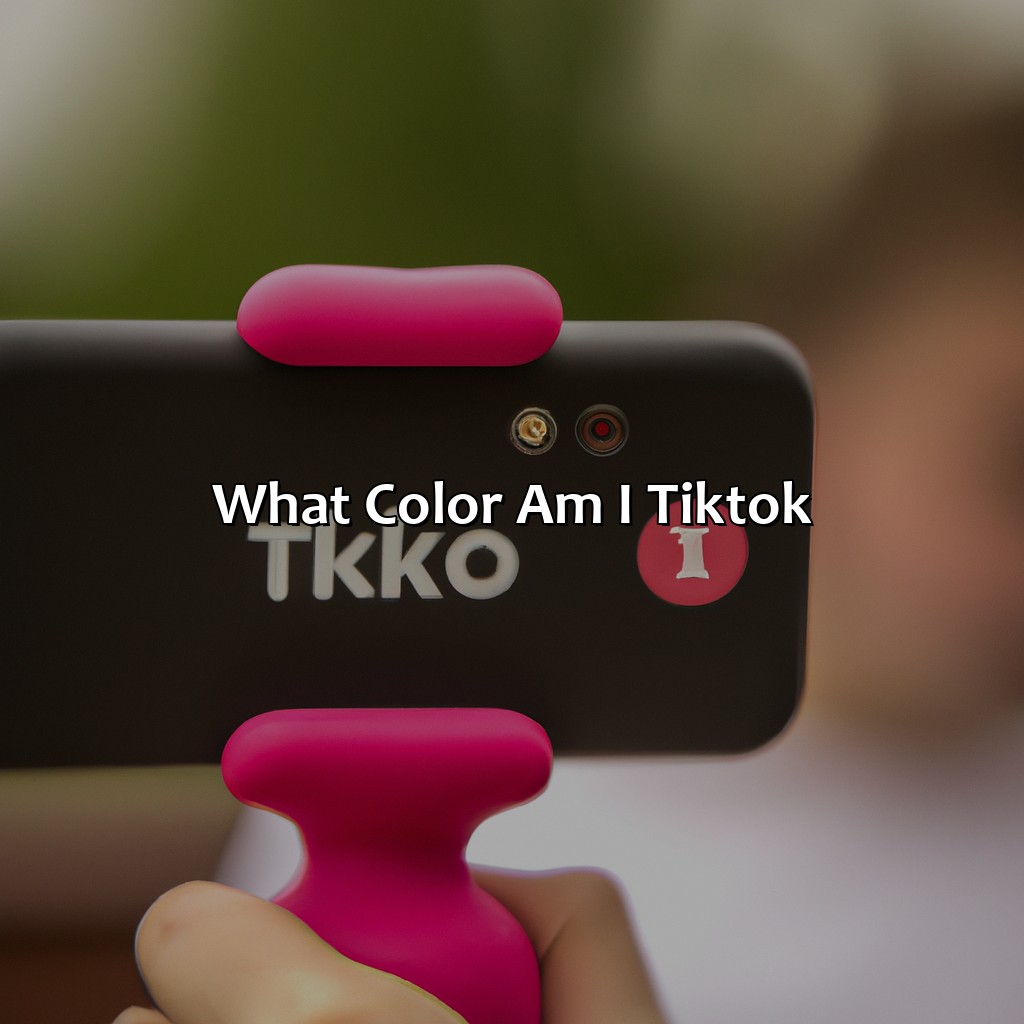Key Takeaway:
- Primary colors, such as red and yellow, are essential in color mixing. When mixed together, they create secondary colors, including orange.
- The resulting color depends on the type of color mixing, whether it is additive or subtractive. Additive mixing happens with light and creates brighter colors, while subtractive mixing happens with paint or other pigments and creates a darker color.
- Mixing red and yellow together creates orange in subtractive color mixing. The resulting orange can vary in hue and chroma depending on the amount of each color used.
Understanding color mixing
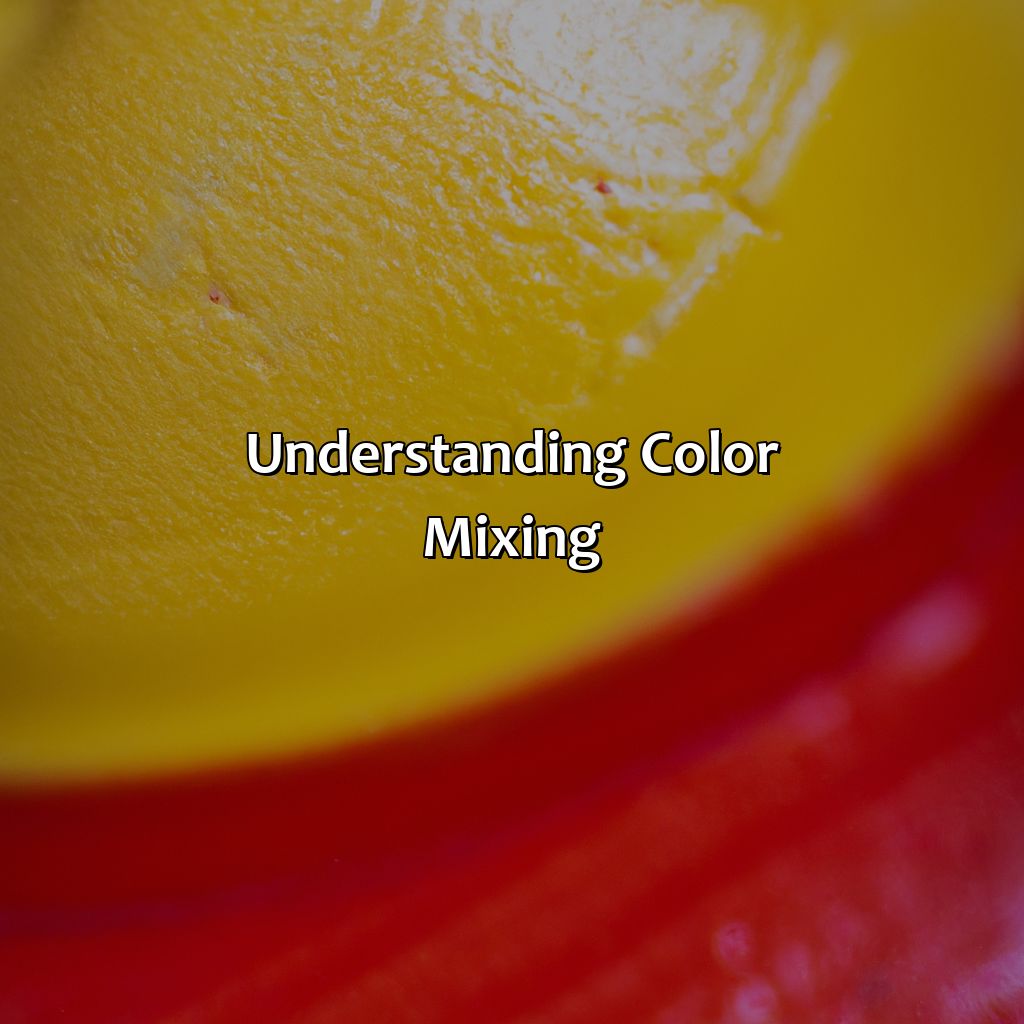
Photo Credits: colorscombo.com by Bruce Wright
Color Mixing: Understanding the Science behind Hue, Tint, and Shade
Knowing how to mix colors is essential for achieving desired hues, tints, and shades. By blending primary colors, secondary colors can be created, such as mixing red and yellow creates orange. Understanding color mixing requires knowledge of the color wheel, which shows the relationships between colors and how they mix to create new ones.
To create different hues, tints, and shades of a color, mix it with white, black, or a complementary color. For example, mixing red with white creates a lighter tint of red, while mixing it with black creates a darker shade. Adding a small amount of a complementary color can create a muted or desaturated hue.
Although color mixing may seem simple, it is a science that has been studied for centuries. The first recorded color theories were written by Aristotle, and the modern color wheel was developed by Isaac Newton in the 17th century. Today, color theory is used not only in art and design but also in fields such as marketing and psychology.
Understanding color mixing is essential for artists, designers, and anyone working with color. By mastering the science of hue, tint, and shade, one can create an endless array of colors and achieve their desired visual effects.
Primary Colors
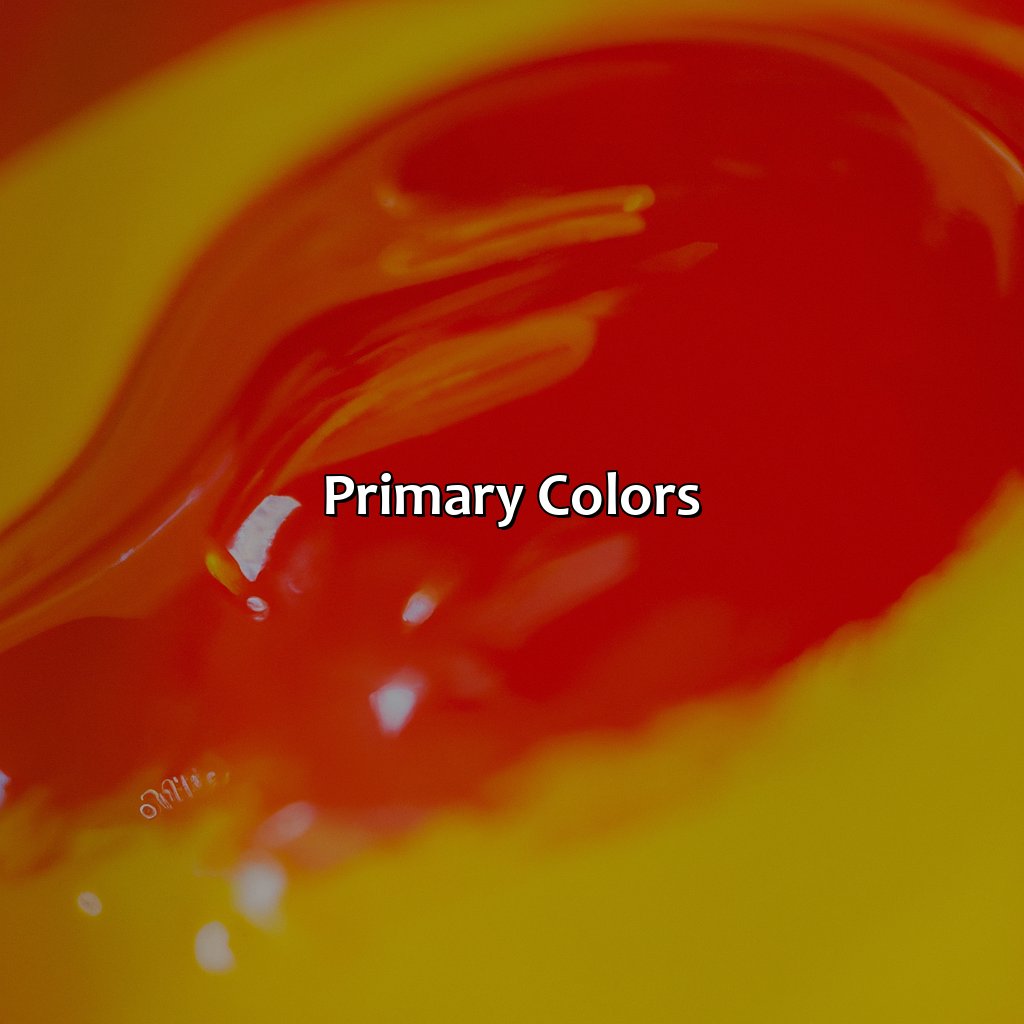
Photo Credits: colorscombo.com by Larry Robinson
Comprehending the realm of color requires an understanding of primary colors in color theory. To gain insight, we will investigate “Primary Colors” and its sub-sections, “What are primary colors” and “How primary colors are important in color mixing”. These subsections will show you the significance of primary colors in the color wheel. They will also illustrate how blending these colors generates new ones with the additive or subtractive color processes.
What are primary colors
Primary colors refer to a set of colors that cannot be produced by mixing any other colors and are used as the basis for all other colors. Color theory explains that red, yellow, and blue are commonly considered primary colors in traditional art while in science pigments, red, green and blue are classified as primary. These primary colors hold great importance in color mixing as they can be fused with each other to create new secondary or tertiary shades. Secondary and tertiary hues differ from primaries as they can be created by combining two or more primary or secondary colors respectively.
Mixing two primary colors together results in the creation of a new secondary color. For example, combining red and yellow produces orange. The resulting color is entirely reliant on the combination proportions of the two hues used during blending. The scientific explanation behind this is that different wavelengths corresponding to each pigment blend together to produce brand-new spectrums when mixed.
When you mix red and yellow, you get the color orange. Orange is an appealing meld between its parent hues, resulting in a pleasing warmth reminiscent of fire-lit evenings. This hue represents enthusiasm, creativity and has acclivity significance particularly in autumn-themed design scenarios.
One can further experiment with primary pigments to achieve more captivatingly complex hues such as Greens made by mixing yellow and blue pigments whilst Purple being attained through Red combined with Blue pigments. Underlying this continual merging rainbow of color theory always rests with these three fundamental primary pigments forming every possible palette combination leading to unlimited creative potential in their application.
Mixing primary colors is like a chemistry experiment, and understanding how they work is key to creating any color you want.
How primary colors are important in color mixing
The significance of primary colors in color mixing lies in their ability to create all other colors. Mixing primary colors results in secondary and tertiary colors that can be used in a multitude of applications from art to design. Primary colors are the fundamental building blocks of the color spectrum and without them, it would be impossible to produce more complex shades. With the help of primary colors, painters, printers, designers, and makeup artists can create a broad range of hues.
Primary colors hold immense importance in creating an extensive range of hues. By blending primary colors like red, yellow, and blue together in different quantities, several tertiary and secondary shades can arise such as orange, green or purple. These new hues offer endless possibilities for creative expression. The versatility of primary colors as well as the predictability of their reactions make them essential for colorful compositions.
Unique details that have not been introduced are their historical origins. It was Sir Isaac Newton who first discovered primary colors back in 1672 while conducting experiments on light refraction using his prism experiment. Primaries were revolutionary at that time because they marked a movement away from color theory based around pigments towards one focused on light waves.
Primary Colors have played an expanded role since being explored by Sir Isaac Newton during the late seventeenth century experimenting with light rays and prisms. To this day, they remain vital to artistic creativity due to their versatility when combined with other primary and secondary colours thus demonstrating their importance throughout history until this present age!
Secondary colors are like the delicious cocktails of the color world, mixing primary colors together for some serious hue harmony.
Secondary Colors
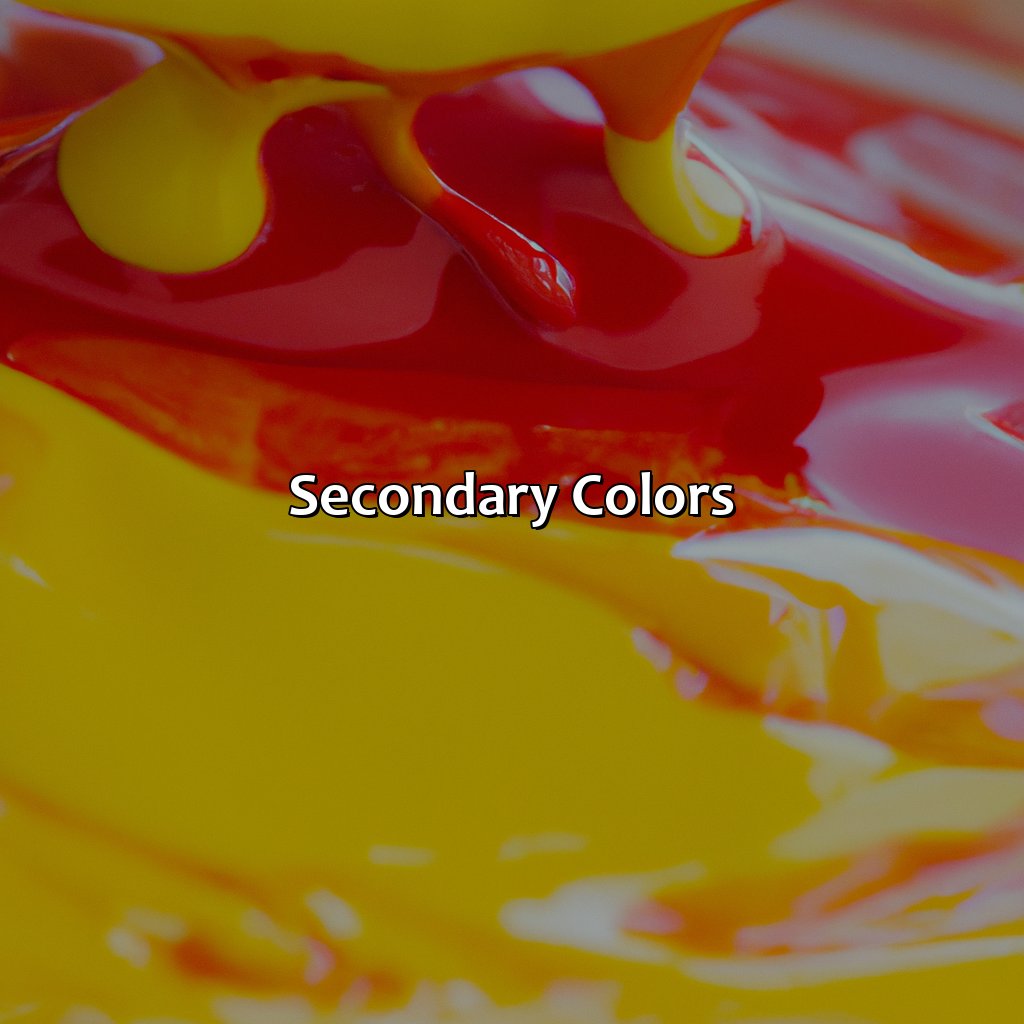
Photo Credits: colorscombo.com by Harold Wilson
Discover what secondary colors are with our color theory and color perception guide! Learn their definition and how they’re made by mixing primary colors. Why is this knowledge of color mixing important? We explain it all in our section on secondary colors.
Definition of secondary colors
Secondary Colors: A Breakdown
Secondary colors result from the mixing of two primary colors in equal parts. They are green, orange, and violet. Mixing two primaries can reveal the corresponding secondary color, a crucial aspect of color theory.
By combining different primaries, including red and yellow, one can arrive at secondary hues that offer practical uses in the design industry. For example, by blending yellow with blue or mixing red with blue paint, designers can create unique shades that cater to specific project requirements.
Additionally, by understanding how secondary colors like orange can be formed from a blend of red and yellow pigments or lightwaves at different frequencies, designers can create visually stunning compositions that captivate audiences.
Furthermore, secondary colors serve other essential roles in harmonic relationships between different hues within an artwork. In some instances, secondary tones act as transitional spaces between primary hues that allow for smooth transitions throughout a piece.
For instance, in a painting where there is an area of warm colors and another area with many cool colors; introducing neutralizing tone like green could act as a buffer zone enhancing balance within the composition.
Based on this understanding of color theory principles, we could say that while primary colors form the backbone of our creative approach when designing graphics or artworks since they cannot be mixed by any other hues Secondary are what give art movement cohesiveness.
Why settle for just three primary colors when you can mix them and create a whole rainbow?
What happens when primary colors are mixed
When primary colors are mixed, they create secondary colors. The resulting colors are dependent on the combination of the primary colors mixed together. See below for a table outlining the different combinations of primary colors and their resulting secondary color:
| Primary Colors Mixed | Secondary Color Result |
|---|---|
| Red + Blue | Purple |
| Yellow + Blue | Green |
| Red + Yellow | Orange |
It is important to note that when two primary colors are mixed, a secondary color is created that cannot be made from any single primary color alone.
Additionally, mixing different ratios of primary colors can result in unique shades and tones of secondary colors. For example, mixing more blue than yellow would create a green with a cooler tone.
To achieve the desired resulting color, it is important to have an understanding of color theory and how different combinations of primary colors will interact with one another. Experimenting with different ratios and shades can also lead to unique and interesting results in color mixing.
Messing with red and yellow is like playing with fire, but you’ll end up with a whole spectrum of colors.
Mixing red and yellow
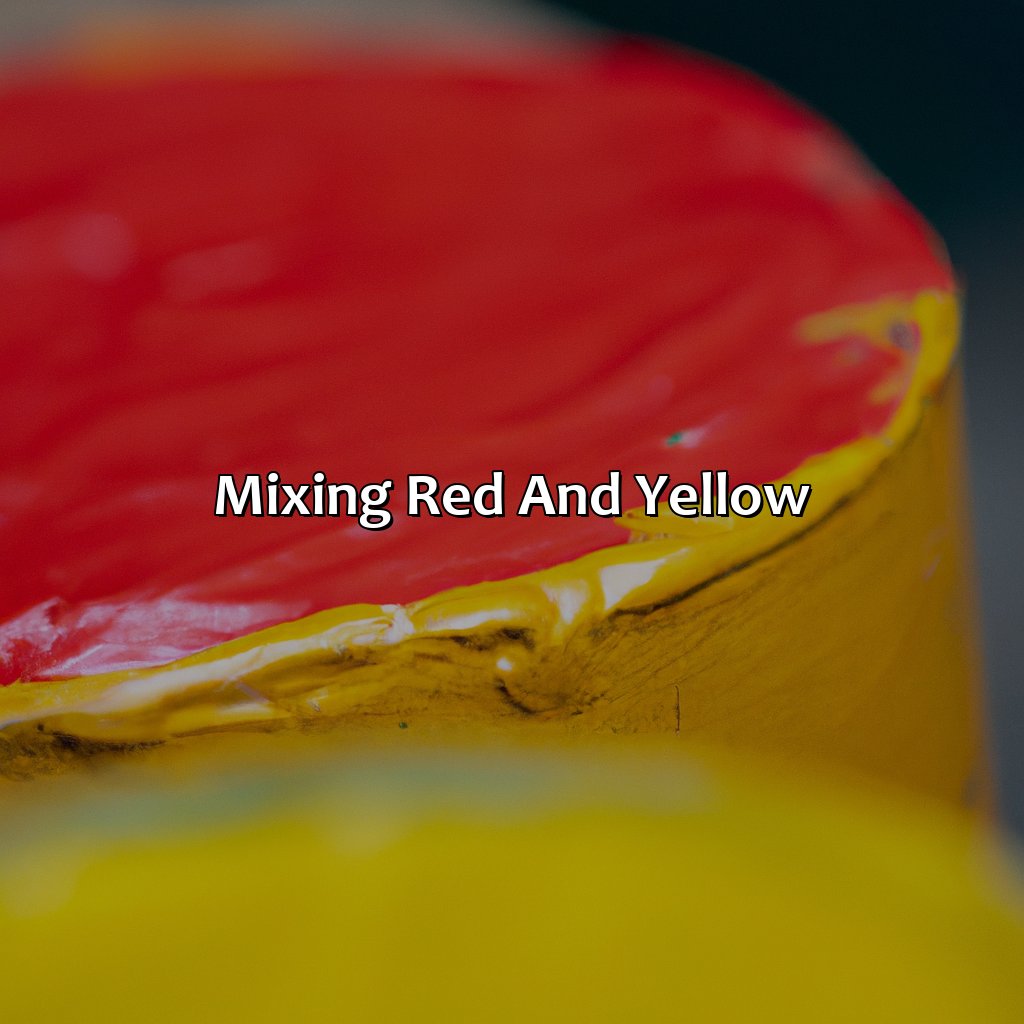
Photo Credits: colorscombo.com by Juan Hill
Mixing red and yellow correctly requires understanding color theory. Learn how to mix these colors with different methods. Firstly, know the basics of color theory. Then, explore the methods used to mix red and yellow.
Methods of mixing red and yellow
Mixing red and yellow is a crucial aspect of color theory. Red and yellow are primary colors in the subtractive color system, which means they can create secondary colors like orange. There are different methods of mixing red and yellow together, such as physically blending paints or using digital color software to create new shades.
Using additive color mixing principles, when red and green light are overlapped, it creates a yellow hue. In contrast, when red and blue light mix together additively it creates magenta. The mixing process is different with subtractive colors because instead of light wavelengths being added together they are subtracted from white light.
To achieve orange by mixing these two primaries physically on paper or canvas requires experimentation with either acrylic or oil paints until an appropriate hue is achieved. It’s important to keep in mind that the resulting tone will depend on the pigments used because each pigment has a unique characteristic.
Pro Tip: When trying to achieve a specific shade utilizing a palette knife or brush technique can help avoid muddy results that occur from overmixing pigments.
Mixing red and yellow may seem simple, but understanding color theory is the key to unlocking a world of hues.
Explanation of color theory in relation to red and yellow mixing
When red and yellow are mixed, the resulting secondary color is orange. This combination is based on the basic concept of color theory, which states that primary colors cannot be created by combining other colors. Red and yellow are two of the three primary colors in traditional color theory, while blue is the third.
The process of mixing two primary colors to create a secondary color is not difficult to understand. Primary colors are pure and cannot be made from other colors, whereas secondary colors are created by mixing two primary shades together.
The creation of orange by mixing red and yellow marks an essential aspect of color theory study, as it serves as a basis for later learnings. Orange also comes about when adding more yellow to red or more red to yellow.
Color theory has undergone a long and complex development throughout history. The earliest known theory was outlined by Aristotle in 350 BC but was later developed by Isaac Newton in the 17th century. Color theory has since been refined by many different artists and scientists over several centuries. Today it remains one of the fundamental aspects of artistry for painters and designers alike.
By understanding how colors interact with one another, individuals can choose healthy combinations while picking paint or designing fashion items like bags or dresses that synthesize well with each other.
Mixing red and yellow might make you feel like a kindergartener, but the resulting color is far from child’s play: it’s a vibrant shade of orange with endless possibilities for creating tertiary colors.
Resulting color
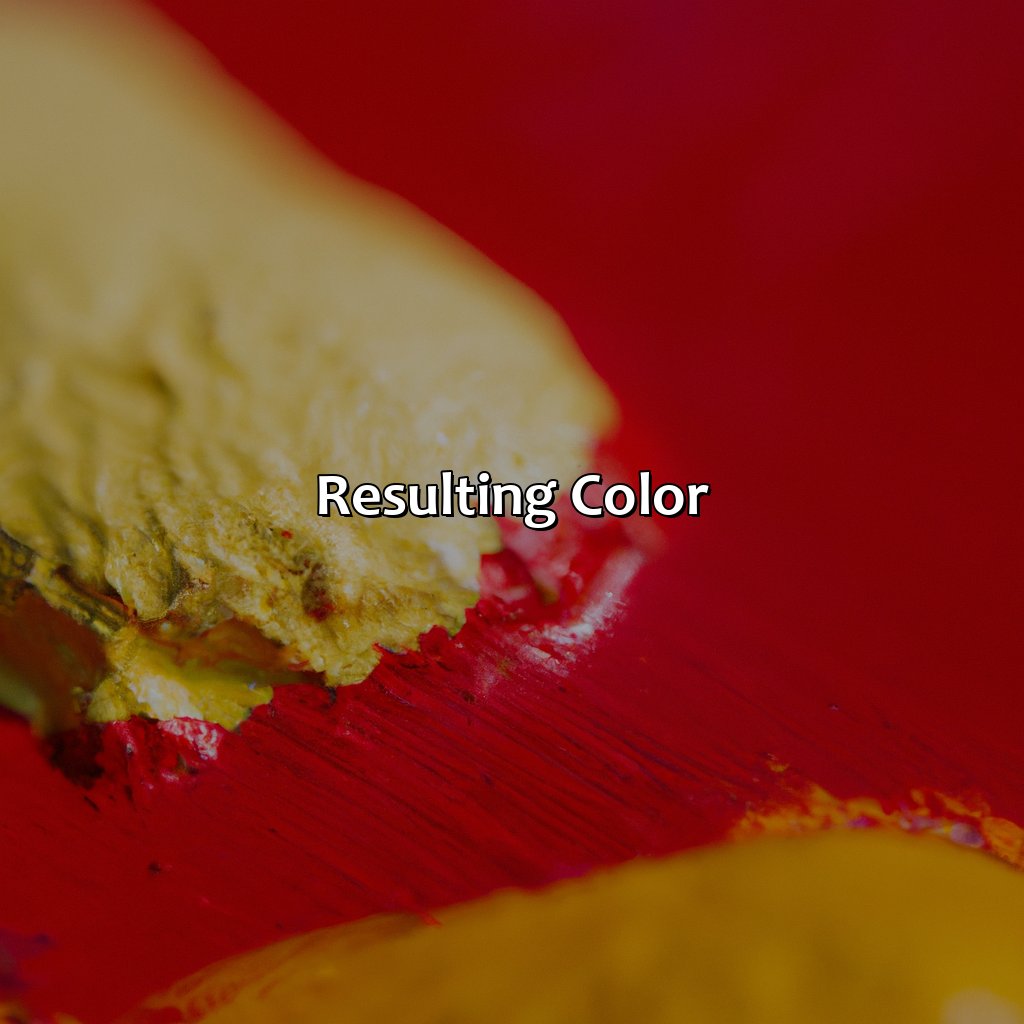
Photo Credits: colorscombo.com by Ryan Smith
Do you want to know what color you get when you mix red and yellow? Read the section “Resulting Color” with its sub-sections. The answers are in the keywords: red, yellow, mix, resulting color, orange, hue, and chroma. Uncover the hue and chroma of the resulting orange color!
What color do you get when you mix red and yellow
When red and yellow are mixed, the resulting color is orange. This occurs when two primary colors are blended together which creates a secondary color. In color theory, primary colors are the basis for all other colors and cannot be created by mixing other hues. Mixing red and yellow creates orange because it includes equal parts of both colors.
The resulting color produced from combining red and yellow is known as an intermediate hue, or tertiary color. Orange falls between the warm tones of red and the cool tones of yellow on the traditional color wheel.
It’s important to note that variations in shade can occur based on the specific shades of red and yellow used in blending, as well as their proportions. For example, a higher concentration of red may produce a more reddish-orange hue while more yellow would create a more yellower-toned orange.
Pro Tip: To achieve a brighter or more vibrant orange tone when mixing red and yellow, try using paints or pigments with higher saturation levels.
Mixing red and yellow creates a fiery orange hue, with just the right amount of chroma to spice up any artwork.
Explanation of the resulting color
The resulting color when red and yellow are mixed is orange. Orange is a secondary color that can be created by combining equal amounts of red and yellow pigments. The hue of the resulting color will depend on the specific shades of red and yellow used, as well as the amount of each pigment used in the mixture. The chroma, or intensity, of the resulting color can also be adjusted by adding more or less of either pigment to the mixture.
When mixing red and yellow, it’s important to keep in mind that they are primary colors and cannot be created by blending other colors together. However, when mixed, these two primary colors create a secondary color with unique properties.
The resulting orange hue can vary depending on the shade of red and yellow used in the mixture. For example, using a warmer shade of red will result in a more vibrant orange hue than using a cooler tone of red. Similarly, using a brighter shade of yellow will create a more intense orange than using a paler tone.
Other colors can also be made by mixing red and yellow with additional pigments. For example, adding white to an orange mixture will create pastel orange hues, while adding blue to an orange mixture will create brown tones.
Once I saw an artist mix different shades of red and yellow to create an orange hue for their painting. They tested multiple combinations before finding the precise measurement for their desired chroma level which helped them achieve their intended outcome.
Mixing red and yellow may give you orange, but with the right paint palette, you can unlock a whole spectrum of beautiful tertiary colors.
Other colors that can be made with red and yellow

Photo Credits: colorscombo.com by Ralph Jones
Go beyond orange! Mix red and yellow in different amounts to create tertiary colors. To help you achieve this, the section “Other colors that can be made with red and yellow” has two sub-sections. These are:
- “Additional colors that can be made with these primaries”
- “Examples of these colors in real-world scenarios”
Additional colors that can be made with these primaries
Colors can be mixed in various ways to create new shades and hues. Red and yellow are primary colors that can also be used to make many other tertiary colors.
To illustrate, refer to the table below for additional colors that can be created using red and yellow on a paint palette:
| Primary Colors | Additional Colors |
|---|---|
| Red + Yellow = Orange | Red + Yellow + Blue = Brown |
| Red + Yellow + Black = Olive Green | |
| Red + Yellow + White = Cream |
One unique detail to note is that the resulting color may vary depending on the type of pigment used in the paint. Some variations may include warm or cool tones.
If one desires a more muted tone, they can add white or black to decrease intensity. For example, mixing red and yellow with varying amounts of white could result in a peachy shade, while adding black could create a brick- or rust-colored hue.
In order to achieve specific colors accurately, it is always best to use precise amounts of each primary color. One key suggestion is to use small portions first until the exact hue desired is obtained. Another suggestion would be to experiment with different types of pigments to discover unique effects.
Mixing red and yellow may not make a rainbow, but it sure does make a beautiful shade of orange.
Examples of these colors in real-world scenarios
Real-world examples of colors created by mixing red and yellow can be seen in various art forms. Artists use color theory to mix these primary colors on their palette, creating unique shades for painting on canvas. Some of the secondary colors derived from red and yellow include orange, brown, and rust tones. These tones are often used in landscape, still-life, and portrait paintings.
- Orange – A combination of red and yellow hues can create a loud and playful color that can convey energy. Artists use this color to paint sunsets or playfully depict objects that require a brighter color than traditional red or yellow.
- Brown – Using varying amounts of red and yellow in painting results in warm browns that are ideal for natural landscapes or aging objects such as wooden doors or walls.
- Rust – This is also a warm tone that is reminiscent of aged metal, agricultural equipment, fencing materials with its reddish-brown hue.
- Egg Yolk Yellow – This is noticeably different from the primary yellow as it is intense and bold. A mixture that would look good for Autumnal elements like leaves.
It’s fascinating how just a small variation of the amount you mix these primary colors could yield very different secondary hues. The variations can lead to an interesting range on your palette that will offer an extensive selection when working on any artwork.
Artists have been known to get their inspiration from various sources; some could be influenced by real-world experiences, while others build their way using imagination.
For instance:
An artist named John loved hiking mountains and taking pictures during his treks. At 44 he faced open-heart surgery whereby he got inspired while looking at his ultrasound pulse reading during recovery which appeared as an abstract design composed of reds, yellows and pinks- Colors soon transferred onto his canvas forming into a beautiful landscape series based solely on his imagination.
These real-world scenarios highlight how colors play an essential role in artistic expression, and primary ones like red and yellow often provide endless possibilities when combined to create unique secondary hues.
Color mixing is like playing mad scientist, but with less explosions and more beautiful resulting colors.
Summarize the findings of the article
This article about color mixing is a summary of primary and secondary colors. It explains what primary and secondary colors are, their importance in color theory, and the resulting color when they are mixed. The focus is on red and yellow mixing to form orange, which can then be combined with other colors to create various shades. Additional colors made by red and yellow are green and brown. Understanding color theory is necessary for artists, graphic designers, and anyone working with color.
Pro Tip: Remember the rule of thumb for mixing primary colors – no more than 2 or 3 colors at a time to avoid muddying the result.
Restate the conclusion of what color is made when red and yellow are mixed
When red and yellow are mixed, the resulting color is orange. This is because red is a primary color and yellow is also a primary color. When these two primary colors are mixed together, they create a secondary color, in this case, orange. The resulting color will depend on the amount of each primary color used in the mixing process.
Mixing red and yellow can be done using different methods such as physically mixing paints or digitally combining colors in software applications like Adobe Photoshop. The process of mixing primarily relies on the principles of color theory, where different colors interact with each other to create new hues.
Apart from orange, other colors that can be made by mixing red and yellow include shades of brown and peach. For instance, adding more red to the mix will produce darker shades of orange that lean towards brown. On the other hand, including more yellow will lighten it up and create peach tones.
A true fact: According to Color Matters, an organization dedicated to exploring how color affects human behavior, orange is known to promote enthusiasm, excitement, and creativity.
Some Facts About What Color You Get When You Mix Red and Yellow:
- ✅ When you mix red and yellow, you get the color orange. (Source: Color Matters)
- ✅ Orange is known as a warm color, associated with feelings of energy, excitement, and enthusiasm. (Source: Verywell Mind)
- ✅ The color orange is commonly used in advertising and branding to grab attention and stimulate people’s appetites. (Source: The Logo Company)
- ✅ Orange is a popular color in sports, particularly in team uniforms, as it is believed to increase confidence and energy levels. (Source: Bleacher Report)
- ✅ Orange is also a popular choice in interior design, as it can add warmth and playfulness to a space. (Source: Interior Design News)
FAQs about What Color Do You Get When You Mix Red And Yellow
What color do you get when you mix red and yellow?
When you mix red and yellow, you get orange.
Can you make other colors by mixing red and yellow?
Yes, you can make different shades of orange by adjusting the amount of red and yellow you mix. For example, adding more red will make a darker, reddish-orange color, while adding more yellow will create a lighter, yellowish-orange hue.
Why do you get orange when you mix red and yellow?
Orange is a secondary color, which means it is created by mixing two primary colors. Red and yellow are both primary colors, and when they are mixed together in equal parts, they create orange.
What if you mix a different shade of red and yellow?
The resulting color will depend on the specific shades of red and yellow that you use. However, as long as both colors are still within the red and yellow color family, the result will still be some shade of orange.
Can you mix other colors with orange?
Yes, orange is a versatile color that can be mixed with many other colors to create new hues. For example, mixing orange with blue will create a shade of brown, while mixing it with green will create a more muted, earthy tone.
What are some practical applications of knowing what color you get when you mix red and yellow?
Knowing that red and yellow create orange can be useful in various fields, such as art and design, where the ability to create and mix colors is an important skill. It can also be useful for things like mixing paint or dye, or even in everyday life, like when choosing clothing or home decor items that feature the color orange.


